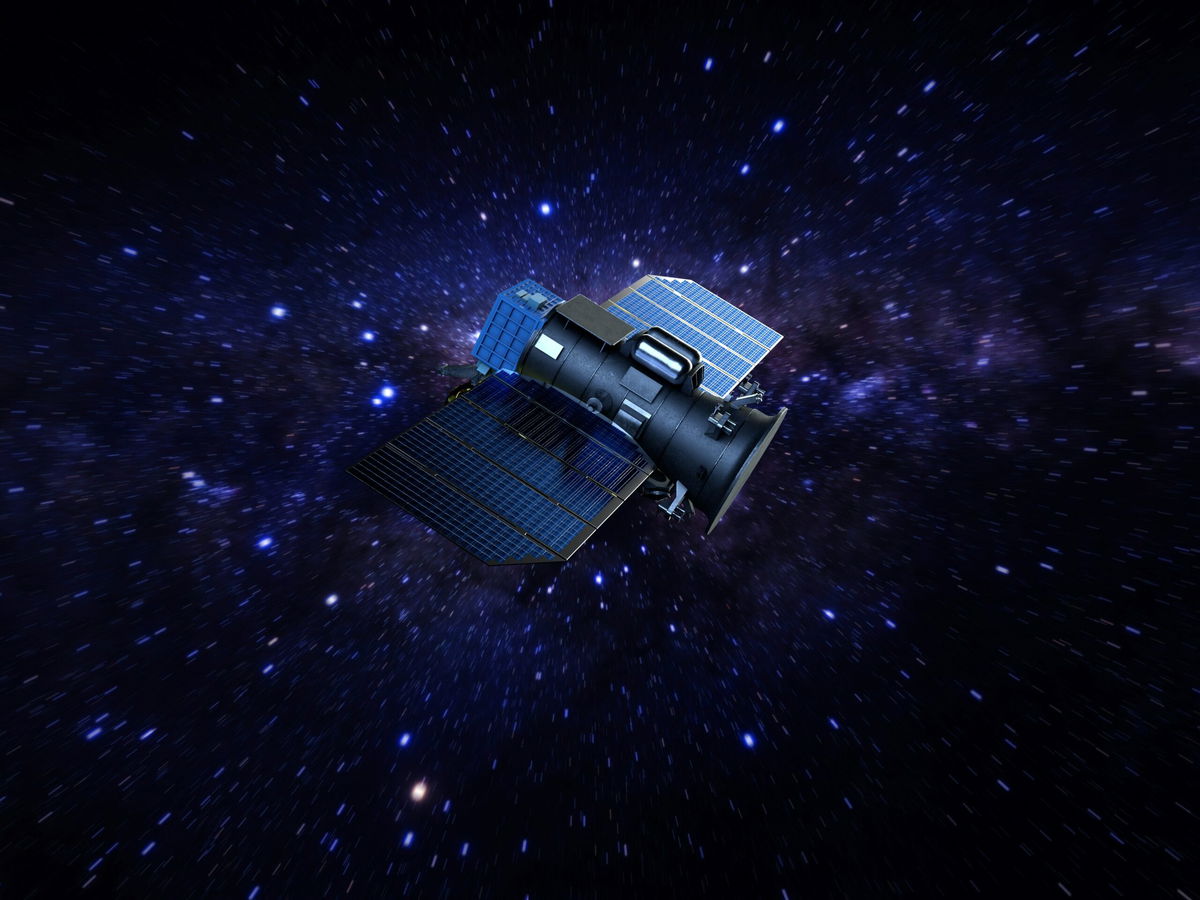
UK researchers will release a satellite coated in Vantablack paint into space.Photo Credit: Allison Saeng via Unsplash
Along with our incredible astronomical developments comes brand new responsibilities as well. Now, we not only have to think about pollution on Earth, but in space as well – and researchers from the UK are ready to take action to lessen a growing problem in the outermost layers of the atmosphere: light pollution.
Scientists from the UK are planning to launch a satellite covered in the ultra-dark paint known as “vantablack” to reduce its reflection of light into the sky, to reduce light pollution and help us get a better view of the cosmos. Vantablack paint, known as the darkest man-made material on Earth, is a special coating that absorbs 99.965 per cent of all light. It is a pigment that was developed in 2014 by Surrey NanoSystems, an English industrial equipment supplier. The name is a portmanteau of the acronym VANTA – Vertically Aligned Nano Tube Array – and Black, and it was originally created for just this purpose: to be used as a tool in space travel to improve visibility of faraway objects. Namely, telescopes can be coated in it to absorb glare, and thus get a clearer view of whatever is being studied.
The Light Pollution Problem
This plan is part of an initiative to combat a growing problem when it comes to space observations and studies: there are nearly 15,000 satellites orbiting Earth at the moment, but experts predict that in less than 50 years, that number will rise to over 100,000. The rise is due to privately-owned groups of satellites, known as “megaconstellations,” which already account for over 60% of the existing spacecraft in low-earth orbit. Not only this, scientists are only just beginning to understand the problems that come with these spacecraft advancements, such as uncontrolled reentries (which refers to a satellite’s unwanted descent back into Earth’s atmosphere), radio signal interference, and light pollution.
Spacecraft of this kind reflect sunlight back into the atmosphere and make it harder to observe space. Observatories lament that the large communications satellites, such as BlueWalker 3, leave white streaks across time-lapse images taken because of how bright they are. Satellites such as China’s newer “Thousand Sails” machines, which aim to provide global Internet coverage, far exceed the recommended brightness levels recommended by experts. The possible solution? Vantablack.
The Amazing “Void” Black Pigment
Vantablack paint became somewhat of a sensation after pictures were taken of it in action. The paint is so dark that many comment that it looks as if there is simply a black void where the paint or painted object should be. Amusingly, shortly after its development many car companies contacted Surrey NanoSystems about coating a car in Vantablack paint, but all requests were ignored – until BMW came knocking. Ben Jensen, founder and chief technical officer of Surrey NanoSystems, said of the event, “We turned down numerous requests from various automobile manufacturers in the past. It took the BMW X6 and its unique, expressive design for us to entertain the idea.”
It was a unique collaboration indeed. The voidlike paint on the BMW X6 makes it not only the darkest car in the world, but also makes it look almost two-dimensional. Before you get excited, though, the car is not actually driveable and is just for show. Vantablack paint is extremely fragile and wouldn’t withstand the wear and tear of regular road use. Not only this, the car is difficult to see, and most likely would cause numerous accidents on the road, especially in low light conditions. More than likely, the car itself doesn’t comply with road safety regulations of practically any country. Finally, Vantablack paint is extremely expensive and difficult to make, even with our current incredible technological advancements. Looks like petrolheads will have to admire this one from afar…
…Until further notice, that is. As it turns out, modern safety sensor systems, namely those that stop your car when you’re getting too close to the car in front of you, actually can sense the Vantablack BMW X6, even though these systems work by picking up reflected light, of which Vantablack releases less than one per cent. How about that?
As for the satellites, researchers have their fingers crossed that the Vantablack paint job might be enough to reduce this problem, and help us to better see and study the never-ending, unknowable universe beyond.







